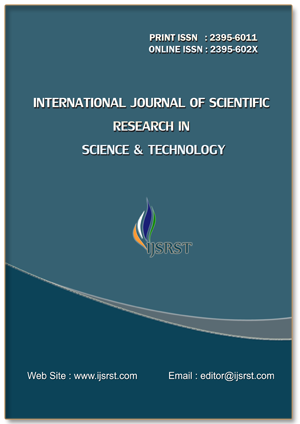The Effects of Waste Tire Rubber on Penetration, Softening Point, Viscosity, Ductility, Flash Point, Specific Gravity, Solubility and Aging of Bitumen Used In Kenya
DOI:
https://doi.org/10.32628/IJSRST2310185Keywords:
Waste Rubber, Asphalt Pavement, Elevated Temperature, Bitumen, Highways, KenyaAbstract
This study was carried out to assess the effect of rubber on conventional bitumen used in road construction in Kenya. This study aimed at characterizing the effects of modifying bitumen with waste-crumbed rubber. The properties of penetration, softening point, viscosity, ductility, solubility, flash point,specific gravity and aging characteristics of bitumen were analysed. The samples of tire rubber were obtained from the dump sites location in Donholm and bitumen samples for penetration grade 80/100, were purchased from Colas East Africa in Nairobi County. The results obtained in this study showed that penetration of bituminous binders reduced from 88 to 41 tenths of a mm at 20 % rubber content. This implied that modified binders became more harder with addition of rubber as a modifier and can withstand fluctuating temperatures of asphalt pavements. Softening point, a candidate also crucial for pavement temperature susceptibility, increased from 48.8oC to 63.9oC at 20 % waste rubber content. This showed that the modified binders can withstand the elevated temperatures of asphalt pavement surfaces. The flashpoint and specific gravity of the neat and rubber-modified binders did not significantly because tire rubber is not very flammable and is of almost same specific gravity as bitumen of 1.1g/cc. Viscosity at 135oC increased from 304.3cSt to 330.7cSt at a waste rubber content of 12% and became unworkable at rubber content beyond 12% when determined using the standard reverse flow viscometers method. Ductility at 25oC reduced from 135.5cm to 48.3cm as 3% to 20% waste tire rubber was added, implying that the rubber makes bituminous binders stiffer. Solubility decreased from 99.6% to 98.3% when 20% of rubber was added implying that addition of more rubber increased impurities in the bitumen. The loss on heating due to aging increased from 0.2% to 0.4% at 12% rubber content and further increased to 1.2% at 20% waste tire rubber content. This showed that the quantity of volatiles increased with addition of more waste tire rubber.
References
- Cheng, Z., Wang, T., Pei, J., Amirkhanian, S., Xiao, F., Ye, Q., & Fan, Z. (2019). Low temperature and fatigue characteristics of treated crumb rubber modified asphalt after a long-term aging procedure. Journal of Cleaner Production, 234, 1262-1274. doi: 10.1016/j.jclepro.2019.06.147
- Kishore, K. S., & Gottala, A. (2015) A study on effect of addition of natural rubber on the properties of bitumen & bituminous mixes. International Journal of Science Technology & Engineering, 2(1), 206-212.
- Masson, J.-F., Price, T., Collins, P., (2001). “Dynamics of Bitumen Fractions by Thin-Layer Chromatography/Flame ionization Detection
- Michele Porto, Valeria Loise, Paolino Caputo, Shahin Eskandarsefat Bagdat Teltayev &Oliviero Rossi (2019) Bitumen and Bitumen modification: A review on Latest Advances; Journal of Applied Sciences DO1 10.3390/app9040742
- Ministry of Transport and Communications. (1987). Road Design Manual Part III Materials and Pavement Design for New Roads.
- Ministry of Roads and Public Works (1986). Specification for Road and Bridge Construction
- Mullins, O. (2008) Review of the Molecular Structure and Aggregation of Asphaltenes and Petroleomics. Spe J.2008, 13, 48–57.
- Murgich, J.; Abanero, J.; Strausz, O. (1999) Molecular Recognition in Aggregates Formed by Asphaltene and Resin Molecules from the Athabasca Oil Sand. Energy Fuels 1999, 13, 278–286.
- Roy, A. (2015). Waste Rubber Bitumen Modifier. International Journal of Engineering Research and General Science, 3(5), 109-119.
- Rudyk, S. (2018). Relationships between SARA fractions of conventional oil, heavy oil, natural bitumen and residues. Fuel, 216, 330-340. doi: 10.1016/j.fuel.2017.12.001
- Scotti, R.; Montanari, L (1998) Molecular structure and intermolecular interaction of asphaltenes by FT- IR, NMR, EPR. In Structures and Dynamics of Asphaltenes;
- Mullins, O., Sheu, E.Y., Eds.; Plenum Press: New York, NY, USA, 1998; pp. 79–113, ISBN 978-1-4899-1615-0.
- Swetha, D. V., & Rani, K. D. (2014). Effect of natural rubber on the properties of bitumen and bituminous mixes. International Journal of Civil Engineering and Technology, 5(10), 9-21.
- National Council for Law Reporting (2012) the Traffic Act, 2012 Chapter 403
- UNEP. (2011) Revised technical guidelines for the environmentally sound management of used and waste
- Yuen Fook, C., & Balaraman, S. (2018). Transition from university to industry: Challenges faced by new engineers in the automotive industry. Management and Accounting Review (MAR), 17(2), 51. doi:10.24191/mar. v17i2.788
- Zhang, H., Chen, Z., Xu, G., & Shi, C. (2018). Evaluation of aging behaviours of asphalt binders through different rheological indices. Fuel, 221, 78-88. doi: 10.1016/j.fuel.2018.02.087
- Carman, N. (1997). Hazards of burning tires. Burning Issues. https://burningissues.org/car-www/latest_news/tires.htm
- Department for International Development. (2002). A guide to the design of hot mix asphalt in tropical and sub-tropical countries. TRL Limited. https://trl.co.uk/sites/default/files/ORN019.pdf
- Ensley, E., Petersen, J., & Robertson, R. (1984). Asphalt-aggregate bonding energy measurements by microcalorimetric methods. ThermochimicaActa, 77(1-3), 95-107. https://doi.org/10.1016/0040-6031(84)87050-1
- Kaseer, F., Martin, A. E., & Arámbula-Mercado E. (2019). Use of recycling agents in asphalt mixtures with high recycled materials contents in the United States: A literature review. Construction and Building Materials, 211, 974-987. https://doi.org/10.1016/j.conbuildmat.2019.03.286
- Kenya National Highways Authority. (2021). Weigh bridge. Retrieved from https://www.kenha.co.ke/index.php?option=com_content&view=article&id=36:weigh-bridge&catid=27&Itemid=180&showall=1&limitstart=
- Okan Sirin, Dalim K. Paul, Emad kassem. (2018) State of Art Study on Aging of Asphalt Mixtures and Use of Antioxidant Additives; Advances in Civil Engineering, https.//doi.org/10.1155/2018/3428961
- Topal, A., Suresh kumar, M. S., Sengoz, B., & Polacco, G. (2012). Rheology and microstructure of polymer-modified asphalt nanocomposites. International Journal of Materials Research (formerly ZeitschriftfuerMetallkunde), 103(10), 1271-1276. https://doi.org/10.3139/146.110750
- World Bank. (2020). Combined Project Information Documents /Integrated Safeguards Datasheet (PID/ISDS) (PIDISDSA23018). Retrieved from http://documents1.worldbank.org/curated/en/228601594481758503/pdf/Project-Information-Document-Integrated-Safeguards-Data-Sheet-HORN-OF-AFRICA-GATEWAY-DEVELOPMENT-PROJECT-P161305.pdf
Downloads
Published
Issue
Section
License
Copyright (c) IJSRST

This work is licensed under a Creative Commons Attribution 4.0 International License.

